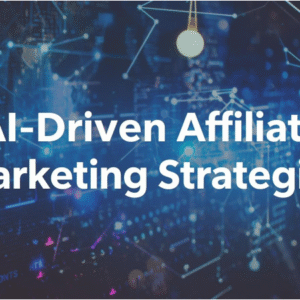YouTube’s new monetization shake-up rolling out in July 2025 is a hot topic among creators today. Whether you’re a veteran daily vlogger or someone posting your first clips, there are a lot of questions about what’s being switched up and how to keep your channel earning. If you’re trying to figure out the new rules, the updated revenue formulas, and the emerging ways to win at YouTube, this updated guide has your back. I’ll break down what’s changing, what it means for your channel’s bottom line, and some smart moves to help you come out ahead, no matter the size of your audience.
TL;DR: YouTube’s 2025 Monetization Update, Explained Fast
YouTube is putting out a major change to channel monetization starting July 2025. The update switches up eligibility, ad revenue splits, and makes engagement a heavier part of earning. Smaller channels now have more opportunity, and some of the old rules will be tossed out. If you know the new policy, you can mix up your content, keep your revenue solid, and actually thrive when everyone else is worrying about the algorithm.
- Simplified eligibility – more ways for small channels to make money
- New revenue formulas focused on engagement, not just watch time or subscribers
- Fresh ad formats and a bigger focus on Shorts and vertical content
- Game plan: Tweak your content for new metrics, keep viewers engaged, mix in brand deals and memberships
Why YouTube Changed Its Monetization Rules in 2025
YouTube isn’t just switching things for the fun of it. The rise of TikTok, Instagram, and other growing platforms has put a real spotlight on the need to attract and keep creators around. The updated rules aim to give more content types a chance to earn and let smaller creators get a slice of the ad revenue. YouTube says their main goal is to make earning on the platform more fair and flexible for every creator, not just the giants.
This switch comes at a time when short videos and fast-moving trends are taking over, so YouTube wants to make sure people stick with their platform and keep growing their unique audience, even if they’re just getting started.
Main Changes Coming to YouTube Monetization
Here’s what’s coming in July 2025:
- Easier Monetization Access: Getting into the YouTube Partner Program (YPP) is simpler. Now you need only 500 subscribers and a new engagement goal based on meaningful comments, likes, and shares, especially on Shorts, instead of the old 1,000-subscriber and 4,000 watch-hour bar.
- New Revenue Sharing Formula: Ad revenue goes deeper into engagement. High-engagement channels, even if they’re smaller, can grab a bigger part of the ad pie thanks to their interactive fans. It means channels with active communities do better, not just those with huge but silent audiences.
- Shorts-First Attitude: Shorts now stand right next to long-form videos for ad sharing. If you make quick, punchy content, your earning window is now wider than ever before.
- Automatic Ad Placement via AI: YouTube’s AI will put midroll and overlay ads into videos, aiming to help you earn more. Manual toggles let you override awkward moments, but YouTube bots ultimately help speed things up and tune your revenue streams (while increasing theirs).
Pros and Cons of the 2025 YouTube Monetization Changes
These new rules carry both upsides and challenges for creators. Here’s how it shakes out
Pros
- Lower subscriber and engagement thresholds, opening doors for newcomers quicker
- Shorts and vertical content now really pull in ad dollars
- Engagement-driven revenue rewards strong communities and lively channels
- New ad controls allow creators some say in placement for better viewer experience
- Cons
- Channels with passive or quiet audiences could see revenue drop as engagement, not watch time, rules the new system
- AI ad placements sometimes chop up video flow (reviewing your own uploads is key)
- The learning curve for new policy and algorithm changes may slow earning until you get tuned in
- The Shorts competition heats up, making it tougher to break through with so many uploads flooding the system
How to Win with YouTube’s New Monetization System
Jumping in quickly and adapting is the way to get ahead. Here’s what’s working for me and other creators who aren’t afraid to tweak their process:
- Crank Up Engagement: Get active in your comment section, especially in the first day after upload. Ask people to comment, run interactive polls, and encourage sharing every time. Being lively and pulling viewers into conversations boosts your earnings under the new rules.
- Mix Your Content Types: If you mainly post long videos, start adding Shorts. All about Shorts? Try out mini series or split uploads to keep people coming back for the next part. Blending sets your channel up for wider reach and new engagement records.
- Use Analytics Beyond Views: The latest analytics dashboard now highlights things like shares and repeat watches, not just likes and total watch numbers. Track these stats and build future content around your most engaging topics.
- Control Your Ad Placements: Watch videos after publishing to spot weird AI ad drops. Use the updated toggles to clean these up, so your punchline or important moment isn’t interrupted. This keeps viewers watching longer and chatting in the comments.
- Look Beyond Ad Revenue: Don’t rely on just YouTube ads. Try memberships, create exclusive content, and team up with brands for shoutouts or sponsorships. If your ad revenue stumbles during this change, these extras keep your channel steady.
Extra Tips for Creators Navigating the New System
- Experiment with Upload Schedules: The updated metrics mean it’s smart to test different timings. Morning versus evening, weekdays versus weekends, test everything. Personally, I noticed more likes and shares when new Shorts dropped at lunchtime.
- Refresh Old Content: Cut popular long videos into new Shorts. Link the old and new clips with end screens and comments. This tactic can revive your back catalog and score more engagement.
- Make Connections: Team up with other creators in your niche. Cross-promos, collabs, and friendly shoutouts help get your videos seen, especially since the recommendation system looks closely at engagement across multiple channels.
- Keep an Eye Out for Updates: YouTube is tweaking things constantly, so being alert to new features, analytics tools, or policy updates lets you react fast, often before the rest of the crowd figures things out.
What This Means for YouTubers, Big and Small
YouTube’s 2025 monetization update brings more ways for small channels to earn, while putting engagement at the core of ad revenue. Channels that inspire viewers to comment, share, and come back for more will see the most growth under this new system. Passive, evergreen, or how-to-focused channels that don’t get much interaction might notice a decline in earnings. That’s why adapting to new engagement methods is key, try live chats, Q&A sessions, and on-screen prompts to boost activity on your channel.
Frequently Asked Questions
Question: How do I become eligible for monetization in July 2025?
Answer: You need 500 subscribers along with a specific number of meaningful interactions such as likes, comments, and shares over a recent 90-day period. The older system that required 1,000 subscribers and 4,000 hours of watch time is being phased out for new applicants.
Question: Does this update affect existing monetized channels?
Answer: If you’re already in the YPP, you keep your status, but your revenue now tracks more closely with audience engagement instead of solely views or watch time. Channels with lively communities stand to gain the most.
Question: Is Shorts monetization the same as regular videos?
Answer: Shorts now get ad revenue splits based on engagement, and your AdSense dashboard will show these payments right alongside your long-form payouts. If your Shorts rack up lots of comments and shares, you can match or even top your long-form earnings.
Question: What if I make educational or evergreen content?
Answer: Now’s the time to refresh your video plan. Add calls to action, drop discussion prompts, and maybe even host live Q&A sessions to encourage comments and shares on your videos.
Question: Can I opt out of automatic ad placement?
Answer: YouTube gives toggles for manual ad placement, but their algorithm will continue to place ads automatically for “optimal” earnings unless you switch it off completely (which typically leads to fewer ad opportunities and potential revenue).
Wrapping Up
YouTube’s 2025 monetization shake-up kicks off a new chapter for creators, especially for anyone starting fresh or reviving an older channel. The new update is all about building communities and sparking real conversations, not just chasing huge view counts. If you keep engaging your audience, experiment with uploads, and stay quick to adapt, you’ll be in a great place to earn under these new rules. Test, tweak, and listen to your viewers, and your YouTube adventure will not only survive, but thrive in the months ahead.
Let’s make it happen!





